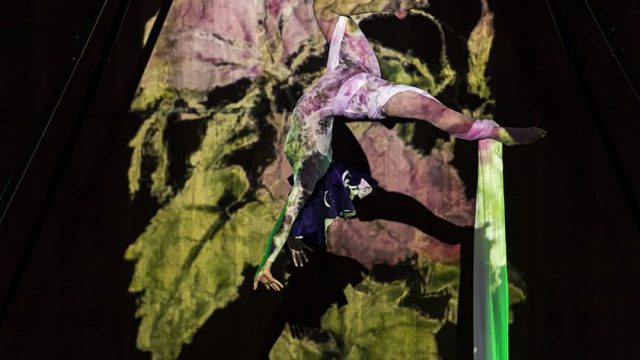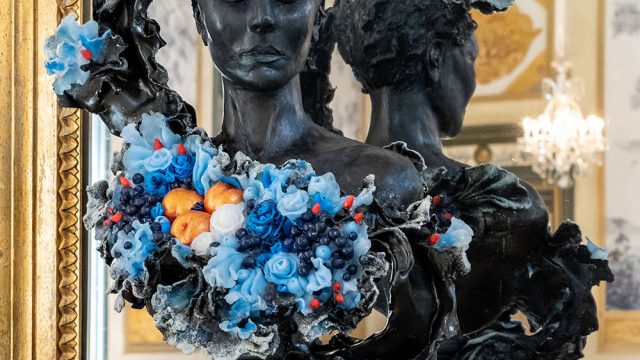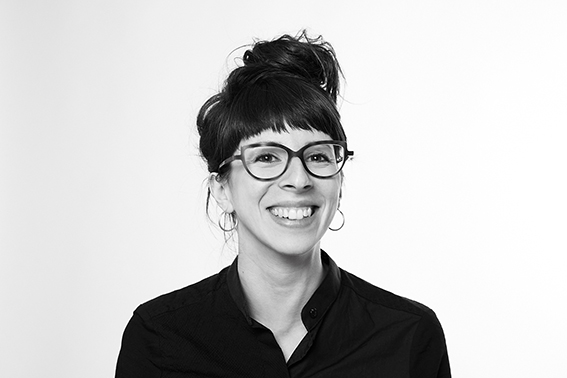
Sometimes the Universe sends us unequivocal signals. When the Goethe Institute wrote to inform me about the opportunity of applying for a sustainable fashion residency at V&A, I didn’t think twice. Somehow I knew this would be the long awaited chance to take a breath from all my activities in Berlin, to change perspective and to deepen my expertise in “Circular Fashion”.
And here I am, one month in, and my first research results slowly taking form.
Before delving into the details of my research journey, I would like to introduce you to the concept of “Circular Fashion”, starting with the reasons behind it and the framework it works within:
The fashion supply chain
Those who have visited the Fashioned from Nature exhibition at the V&A will be clear of our need to transform the fashion industry into a resource efficient circular system. Some of the facts that have further convinced me include:
- in the last 15 years, global clothing production has roughly doubled and the average consumer now buys 60 % more clothing items than 15 years ago
- If we buy more, it doesn´t necessarily mean that we wear more. In fact, according to the traid´s most recent campaign “23% percent”, 23% of the clothes in our wardrobes in London are completely unworn. The making of thses polluted 56 million cubic meters of water, equivalent to that drank by the entire population of London over 15 years.
- Due to the decreasing quality of materials and to fast-changing fashion trends imposed by the high-street retailers, the average lifetime of a garment in our wardrobes is only 2.2 years. The recycling of old clothes is becoming the next frontier for cities to reduce solid waste.
- Beside this, the textile industry is responsible for the generation of huge quantities of pre-consumer waste: virgin materials that never enter the primary market (e.g: cut-offs, end of rolls or flawed & overproduced garments). It is estimated that the textile waste in a vertical factory (one that processes from fibre to garment) can reach up to 47%
Looking at this data, it becomes logical and clear that we urgently need a radical change in the way we consume and produce fashion globally.
“Circular Fashion” is an umbrella term that brings together all the different strategies, technologies and infrastructures that are necessary to create a new framework, within which we can keep resources in closed-loops and eliminate waste.
Considering that our production and consumption patterns are for the vast majority linear systems – we take resources, we produce, we buy the products, use them and discard them – there is one section of the supply chain, called reversible supply chain, that is essential in order to transform the system into a circular one.
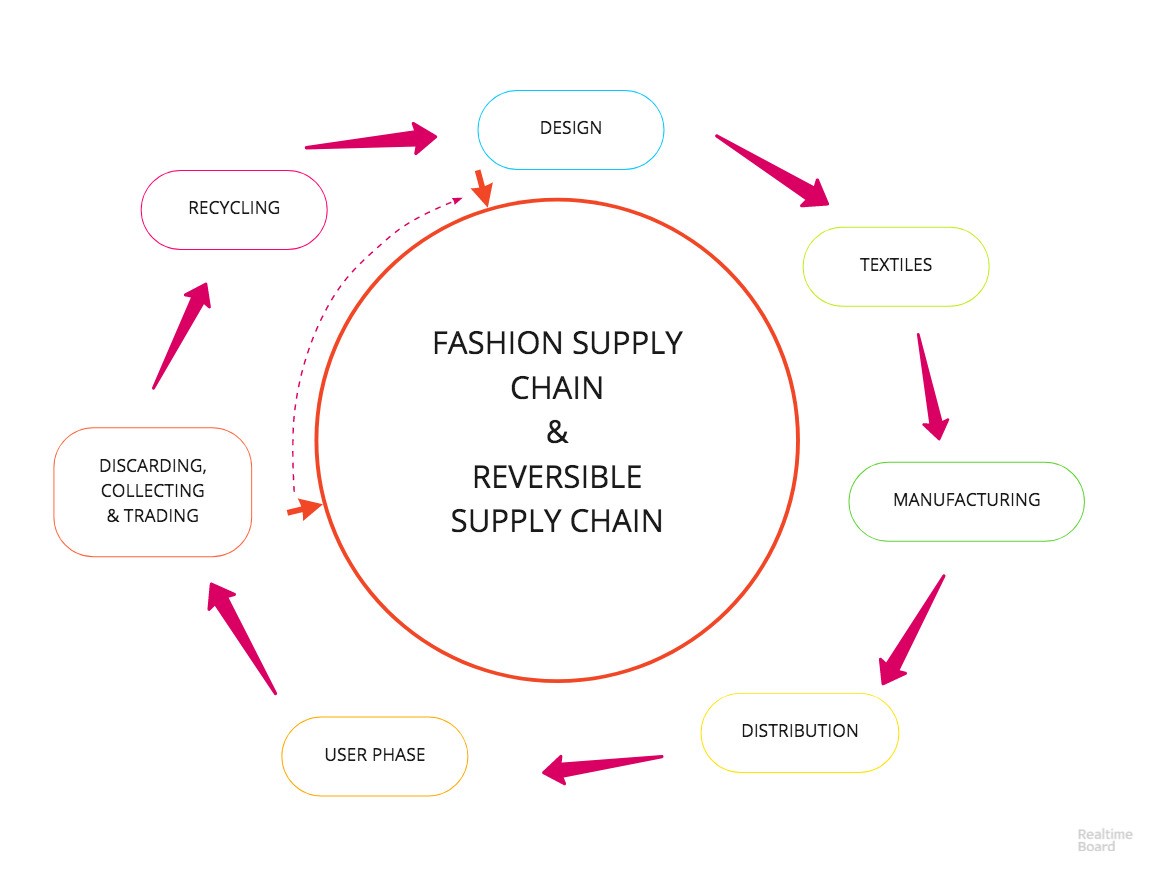
In the above diagram the section from the ‘discard’ stage back to design – including the collecting, sorting, trading and recycling of textile waste – is referred to as the ‘reversible supply chain’. This is responsible for the reintegration of textile waste into the production system.
It is essential to remember that the opportunities for the development of new circular strategies and business models are countless and can be positioned all around the traditional fashion supply chain & the reversible supply chain.
Research Aims
My research aims firstly to clarify the current state of the art in “Circular Fashion” by creating a big picture view of how current and emerging technologies & practices are interconnected and can work synergically. Based upon this I will explore the challenges and opportunities such as missing infrastructure in the system.
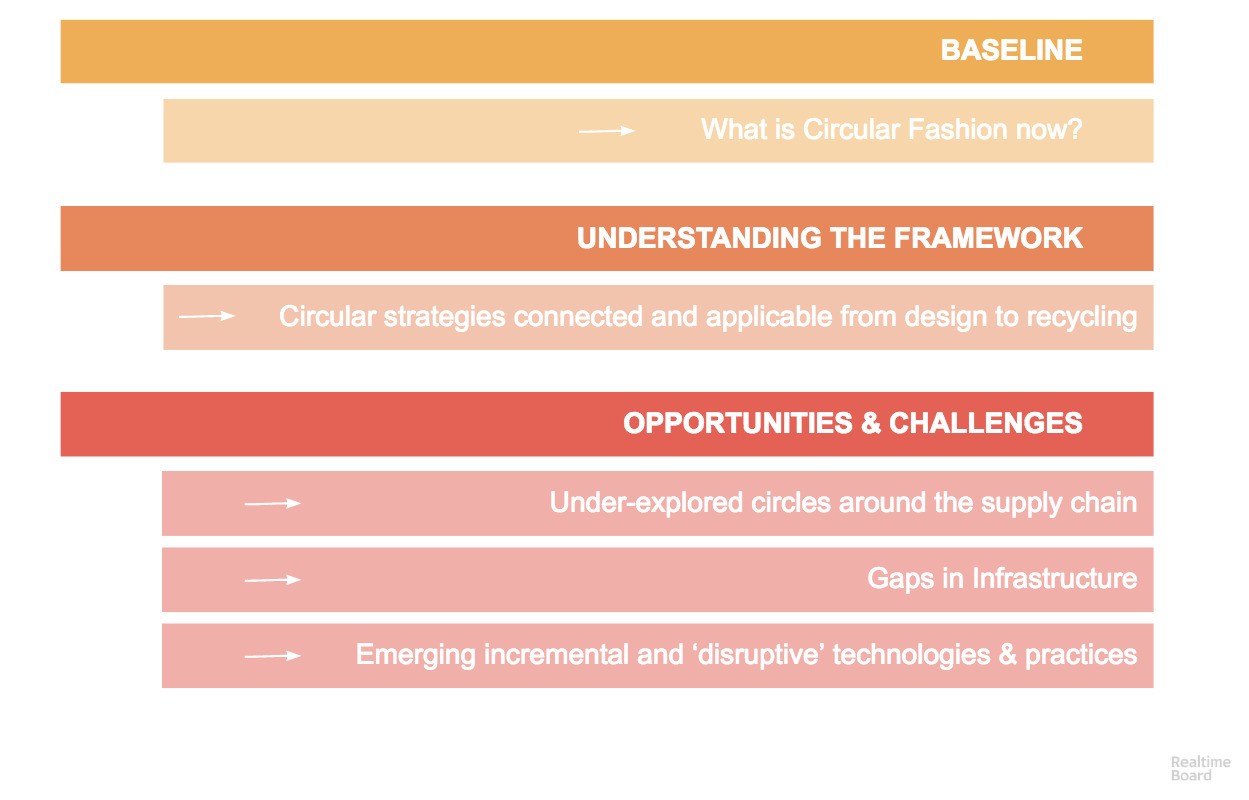
Initial Framework
The first step in the collection of data has been creating a structure by looking at the different supply chain stages. I imagined each as inner ‘industry cycles’ within the overall material circular economy.
As you can see in the image below, each industry cycle is described by some of the most important circular practices & business models corresponding to that specific industry cycle (yellow post-its). For each of these I selected businesses & individuals to interview, starting from the projects displayed at the Fashioned from Nature exhibition.
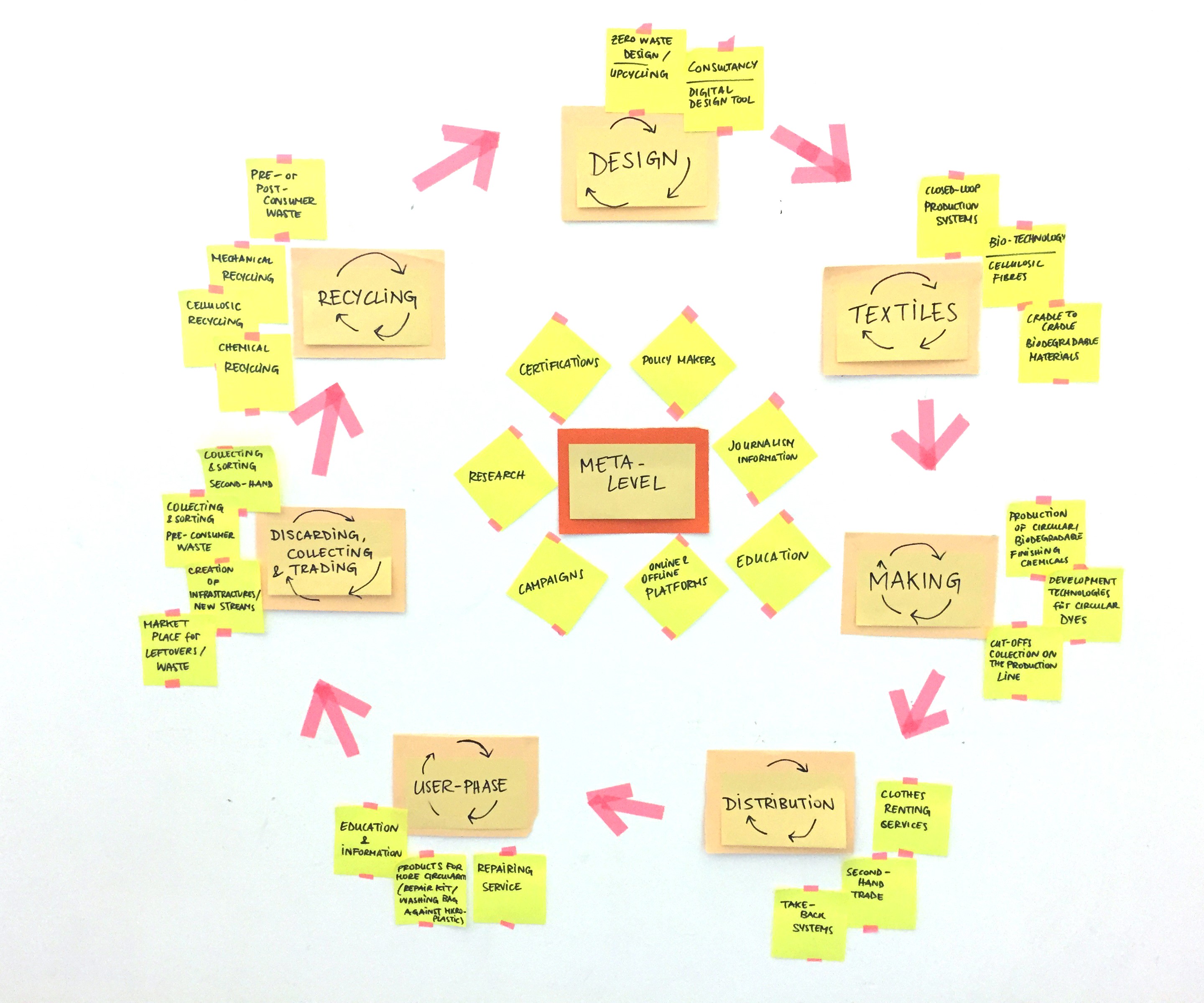
Visualisation of interconnections
With the collected data I’m defining different variables of the system and connecting them to the projects on a continuously expanding 3D web in my studio. Through this work I aim to communicate in a tangible way the interconnections & synergies in the system, and also reveal missing infrastructure and opportunities.
To give an example, one of the most fascinating companies I was able to interview is Bolt Threads, behind two extraordinary innovative materials & production processes: silk or Microsilk & Mylo.
The spider silk is an alternative fibre to silk, produced through a fermentation process of the protein contained in the spider web. The process uses only renewable inputs like yeast, sugar & water and can be done in a closed-loop system saving water and other substances. Through engineering of the protein desirable attributes of the fibre can be fine-tuned, such as resilience, elasticity and colour. This means that minimal chemical additives are required so maintaining the biodegradability and circular production potential.
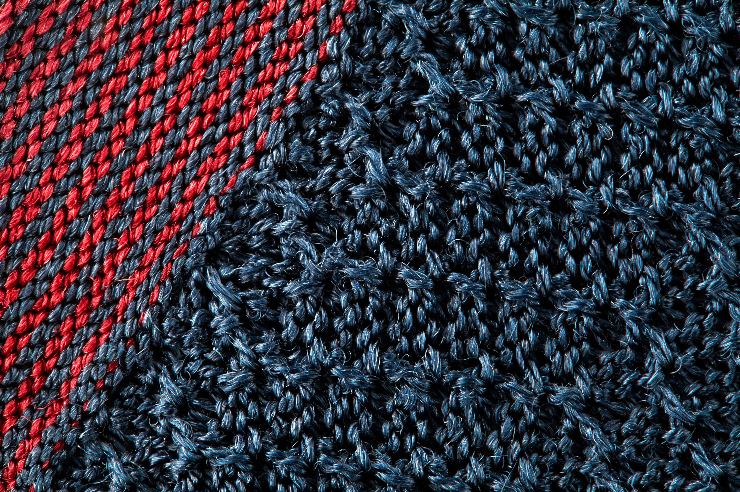 The second material they are working on is called Mylo and is a mushroom leather. In this case Bolt Threads grow mycelium cells adding nutrients and starch. The mycelium creates a 3D web that is the basic structure of the material. Through compression procedures the intracellular structure becomes a sheet similar to leather. Mylo at this stage of its production includes exclusively renewable inputs and is biodegradable.
The second material they are working on is called Mylo and is a mushroom leather. In this case Bolt Threads grow mycelium cells adding nutrients and starch. The mycelium creates a 3D web that is the basic structure of the material. Through compression procedures the intracellular structure becomes a sheet similar to leather. Mylo at this stage of its production includes exclusively renewable inputs and is biodegradable.
These are examples of emerging innovations, huge financial investment to reach commercial scales. There is no doubt, however, that techniques such as these will be part of the future of circular fashion.
Translated into my wall installation, the variables that these examples added to circular system model include: bio-technology, bioengineering, biodegradability, renewable inputs, closed-loop procedures, chemical inputs. Their challenges are: long time research, big investments, reducing chemistry to zero.
You can see my studio installation in the picture below:
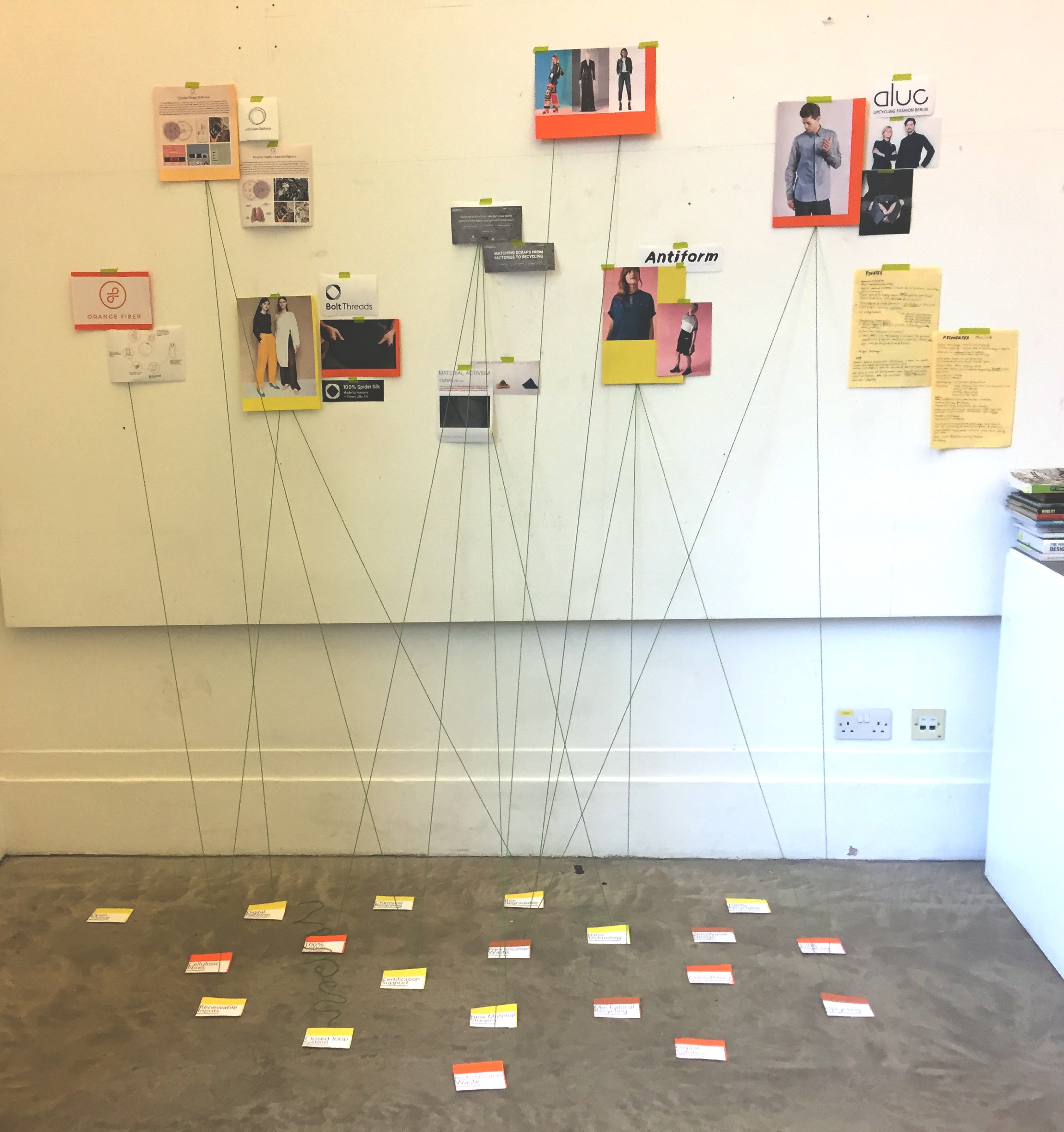
Over the remaining 5 weeks of the residency I will incorporate more case studies which will be covered in future blog posts.
If you are interested in knowing more about my practice, please do not hesitate to contact me at: arianna.nicoletti@future.fashion or have a look on my IG account: ari_around_sustain , or my LinkedIn.
You can also learn more by attending a conference on circular fashion at the Goethe-Institut London on 12 December 2018.

